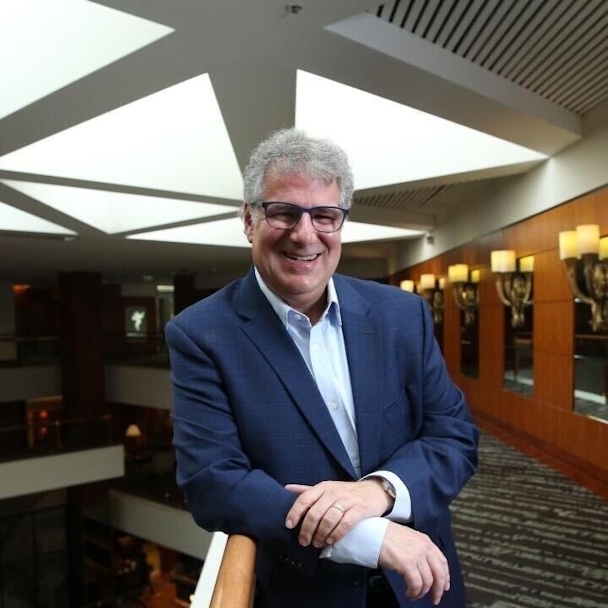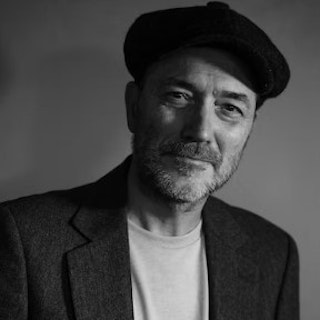Matt Scheckner: the man who made Advertising Week matter
Being named New Yorker of the Year sounds like something out of a Woody Allen script, but for Matt Scheckner, it’s just the latest twist in a career built on bold ideas, iconic venues and a knack for being in the right kind of wrong place. The founder of Advertising Week talks to The Drum about how he built a global brand, one perfectly placed event at a time.

Matt Scheckner
Matt Scheckner has a knack for ending up in the wrong place and turning it into the right one.
It’s a trait that’s defined his career ever since he wandered through City Hall as a college graduate, hoping for a job with nothing but a newspaper clipping from his mum and a sense of curiosity. “There was no internet, so I literally went to City Hall and got sent to the wrong place three times,” he remembers. Eventually, he found the office he was looking for: the Commission on the Year 2000, a blue-ribbon panel tasked with imagining New York’s future and which was the subject of the news piece he was carrying. He charmed the receptionist, landed an interview and got a job.
What followed was less a straight career path and more a series of instinctive pivots. But beneath it all was a set of unshakable beliefs: that places matter, that stories must connect the head and the heart and that if you don’t ask, you don’t get.
Now chair of Advertising Week and named New Yorker of the Year by The Advertising Club of New York’s Advertising People of the Year 2025, Scheckner’s story is a masterclass in turning instinct into infrastructure and building a business that feels and functions like culture.
Want to go deeper? Ask The Drum
A taste for city politics, a hunch about sport
In the mid-80s, Scheckner helped plot New York’s long-term strategy across transportation, healthcare, education and waterfront development as part of his job in the Commission on the Year 2000.
But something bugged him. “Cities were starting to understand that sport was economic development,” he says. “And New York didn’t have anything in place.” He’d seen it first-hand through a university internship in Atlanta, working on a campaign that helped secure the 1996 Olympics. So he made the case to New York: give sports a permanent home at City Hall.
It worked. At 23, he became the founding executive director of the New York City Sports Commission – a job no one else wanted back then, but one he turned into a powerhouse over the next decade.
He brought the Goodwill Games to New York, fought off political interference and quietly saved a boxing club in the South Bronx from eviction. “It was in an abandoned building,” he says. “But just because a building’s abandoned doesn’t mean nobody’s in it.”
The sports gig ended in a clash with Giuliani’s administration and Scheckner left to start his own company. He produced off-Broadway theater, he staged brand extravaganzas for Pepsi (“Ray Charles, the Rolling Stones and Riverdance in Hawaii – Mick Jagger said, ‘All the years I’ve been doing coke, now I do Pepsi’”), he helped launch the Arthur Ashe Stadium, he ran Nathan’s Hot Dog Eating Contest on the corner of Surf and Stillwell in Coney Island.
That last one stuck. “Coney Island was a place where imagination came to life,” he says. “I liked what that symbolized.” When he launched his own agency, he called it Stillwell.
From bathrooms to boardroom
At some point, Radio City Music Hall offered him a spare office. “I didn’t need an office, but it insisted – and it had its own bathroom and its own air conditioner, so I couldn’t refuse.”
That detail might sound trivial, but it was that office and that building that gave Scheckner one of his most formative creative prompts. After 6pm, the executive entrance would shut, which inspired another wrong place insight. “You had to leave through the stage door. You’d walk through the guts of the building. I got to know every inch of it.”
That’s how he discovered the Roxy Suite, an elegant, long-forgotten Art Deco apartment tucked away backstage. The venue’s original impresario, Roxy Rothafel, once lived there. “It was one of those spaces you just don’t forget.”
Years later, a senior exec at DDB, Abby Hirschhorn, called him with a brief: Ken Kaess, then chairman of DDB and the 4A’s, wanted to rethink how the industry presented itself. Scheckner knew exactly where to hold the first meeting. “We didn’t have a name yet, or a plan, but I knew the ‘where’ mattered. So I borrowed the Roxy Suite.”
At the time, Scheckner had never even heard of the 4A’s. “I knew two As. AA is who you call if you drink too much and AAA is who you call if you get a flat on the expressway. But 4A’s?”
Advertising Week was born not from a committee, but a hunch. “The brief was: young people weren’t coming into the business the way they used to. Advertising wasn’t cool any more. And there was no singular event that brought the industry together.” He spent seven months, unpaid, building and developing the concept.
The idea was simple, but potent: thought leadership by day, showbiz by night. Not just panels and PowerPoints, but gigs and galas in spaces that sparked emotion. “It was never just about content. It was about how it made people feel.”
The formula: place, people and purpose
Ask Scheckner what makes a great event and the answer is as thoughtful as it is practical.
“Place is everything,” he says. “You have to get the environment right. People respond to where they are.” From St Paul’s Cathedral to the Sydney Opera House, Ronnie Scott’s to the United Nations, Advertising Week has always leaned hard into venue. But it has never been about grandeur for grandeur’s sake. “You want somewhere that makes people sit up and think, ‘This is different.’”
Then comes programming: the blend of business logic and emotional intelligence. “It’s the mix that matters. The head and the heart. You can have hard-edged sessions on data and AI, but also something that moves people. A conversation on mental health. A talk on purpose. We never say no to an issue. There’s always room.”
And finally, popular culture. “We bring in people from film, fashion, sport, music – because that’s what creativity lives in. It keeps the work alive.”
What binds it all together? “Make it feel human,” he says. “Make people feel proud of what they do.”
Advertisement
Gracie Mansion, Christie Brinkley and a parade of mascots
Scheckner’s first move was classic him: back to City Hall, to pitch Bloomberg’s office on hosting the opening night at Gracie Mansion. He even did an economic impact study with KPMG to show how much advertising contributed to the New York economy. “About 20 cents on the dollar,” he says.
They agreed. He then persuaded the city to shut down Times Square for a parade of advertising mascots – Mr Clean, Tony the Tiger, the Keebler Elves. “It’s not easy to close Times Square, but I knew how to get it done.”
He also launched a schools outreach program that saw ad agencies mentor public school students on real briefs. That initiative eventually evolved into the High School for Innovation in Advertising and Media, which still operates in Brooklyn today.
‘The things that pay and the things that might pay’
By 2006, the 4A’s had pulled back funding and Advertising Week had to stand on its own feet. That’s when Scheckner made his move: he bought out the event, restructured it as a business and turned it into a global franchise.
“I’ve always believed in blending the things that pay with the things that might pay,” he says. “You try stuff. You chase it. And sometimes, it works.”
London followed in 2013, Tokyo in 2016, Sydney in 2018. Then came Johannesburg, in partnership with the Nelson Mandela Foundation and Education Africa. “We brought Kevin Hart to a township called Orange Farm, to a school that has 1,200 kids. We built something there that still stands.”
In 2022, Scheckner sold the business to Emerald Holdings, but remains chairman.
Over the years, Advertising Week has featured everyone from Emma Stone to Nile Rodgers, Al Gore to Bruno Mars. But the magic lies not in the big names – it’s in the mix. “You’ve got to connect the head to the heart,” he says. “The business issues, sure, but also the human ones.”
Advertisement
What he’s proudest of
“I took an idea,” he says, “and built it into a global business. We’ve touched people all over the world. We made people feel good about the industry they’re in.”
He’s still chairman. Still full of ideas. Still planning what’s next. “I’m 60 now. I feel better than I did at 40. There’s more to come.”
And for those wanting to follow in his footsteps?
“Don’t be afraid to fail. Be willing to try. Paint the picture in your head, then figure out how to make it real. And always ask. What’s the worst that can happen? People say no? Sometimes you just keep going till they say yes.”
Featuring:
The Ad Club

Advertising Week
Advertising Week operates in six markets globally bringing together unique media, marketing, brand, technology and broader industry communities. During the week,...

